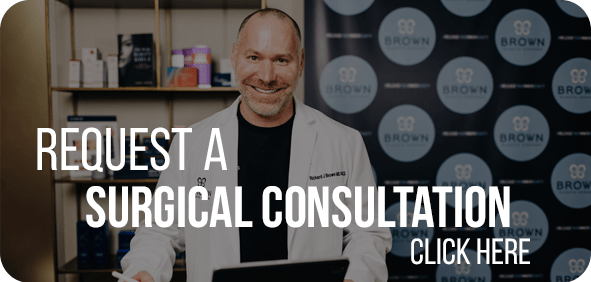3 Common Misconceptions About BOTOX
BOTOX treatment is the most popular minimally invasive cosmetic procedure available. By injecting minute doses of botulinum toxin into certain muscles, the treatment can smooth out wrinkles, help prevent the creation of new wrinkles and slow down the aging process. BOTOX can also help treat migraines, eye twitches and muscle spasms.
Yet despite the efficacy of the treatment and how widespread its getting, there is still a lot of misinformation and misunderstandings associated with it. Patients whose lives could be greatly improved by using it, avoid it because of all these damaging misconceptions about BOTOX.
[Tweet “#Botox is more than cosmetic & can be used to treat #migraines. #releasinginnerbeauty”]
At the offices of board-certified plastic surgeon Dr. Richard J. Brown, we know how beneficial BOTOX can be for our patients. We’ve been working with this drug for years, and in that time we’ve seen firsthand just how safe and effective a treatment it can be. If you’ve ever wanted to get BOTOX done but haven’t because of things you’ve heard, read on as we debunk three common misconceptions about BOTOX.
Related: 7 Ways BOTOX Can Improve Your Life
Myth #1: BOTOX is dangerous.
BOTOX is derived from botulinum toxin, which is why many people assume it is dangerous. In high doses, botulinum toxin could do serious damage to the central nervous system. But what most don’t realize is that there are several different strains of botulinum toxin, each varying in their levels of potency. Researchers from the Harvard Medical School studied all seven strains to see the effects they have on neuron survival and found that strain A, which is used for BOTOX treatments, does NOT destroy neurons and is safe for use so long as it isn’t administered in extremely high doses and is done by a trained professional.
Consider this as well: The FDA approved it. This is a procedure that has been rigorously tested, researched and vetted before being made available for public use. And this is a process that millions of patients have undergone. If getting these treatments done was dangerous, it would not be legal to perform, nor would it be as widely and as often used as it is today.
Myth #2: BOTOX is permanent.
Another popular misconception about this injection is that the procedure is permanent. Even worse is the belief that getting it done will cause your face to “freeze” and lose all expressiveness. This is not true! But to understand why this is so, it helps to understand how BOTOX works.
[Tweet “#Botox causes your face to freeze: True or False? #releasinginnerbeauty”]
The drug temporarily blocks nerve impulses from being sent to specific muscles on your face. The blocked nerve impulses prevent the muscles from contracting and causing those wrinkles and furrows to form on your face. Tiny needles are used to target select facial muscles while bypassing your other muscles and leaving them unaffected. The effects of the injection last for three to four months. The effects fade away because the toxins bind to the receptors of the muscles that existed when the injection was performed; over time your muscles form new receptors, cycling the toxins out of your system and causing muscle activity to return.
Related: How Often Can I Get BOTOX?
When performed by a trained professional, BOTOX should have absolutely no effect on your face’s expressiveness. A “frozen” face only occurs when too many of the wrong muscles are injected, paralyzing those expressive muscles for a few months. This is the kind of mistake that a certified and trained medical professional would not make, which is why you should not get BOTOX done at a spa or any facility where the people who perform the procedure do not have a strong medical background and training.
Myth #3: BOTOX is a commitment.
There is a belief that once you begin getting BOTOX treatments you can’t stop, because if you do it will ruin your face. This is simply not the case. Your wrinkles will not get worse if you don’t get another injection. If anything, getting it often has the opposite effect: A side-effect of the blocked nerve impulses is that muscles get retrained to contract less. Muscles contractions can cause wrinkles, so the less often your facial muscles contract the less lines you’ll have on your face.
Related: How Much BOTOX Can I Get?
Want To Know More Common Misconceptions About BOTOX?
Want to know more about how BOTOX can help you? Schedule your initial consultation with Dr. Richard J. Brown to find out about the BOTOX treatments he offers and which ones would be right for you. Call 480-568-3804 for more information.



